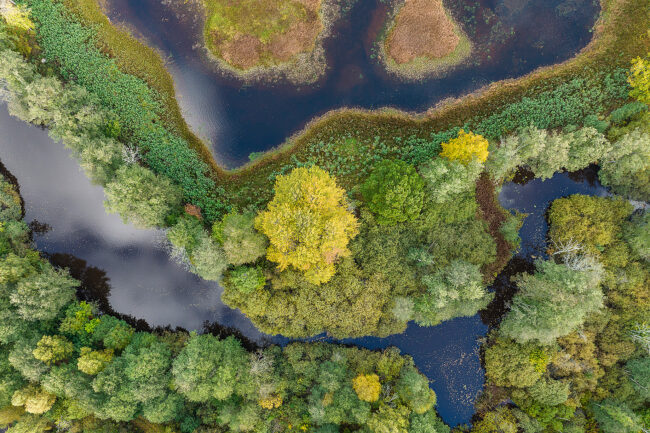Improved habitats
Improved habitats in rivers and coastal areas
Swedish waters have long been altered to suit human needs – for timber floating, agriculture, infrastructure and hydropower. But the physical changes have come at a high cost: habitats for plants and animals have been severely degraded. In the Improve Aquatic LIFE project, we are now recreating diverse and natural environments in both rivers and coastal areas – for increased biodiversity and a healthier ecosystem.
Background
Rivers have been straightened and cleared of boulders, rocks and dead wood to facilitate timber floating, agriculture and hydropower. In coastal areas, bays have become overgrown with reeds and important structures such as eelgrass beds and stone reefs have disappeared due to dredging, construction and eutrophication.
When these structures disappear, habitats become more uniform. Water flow increases, important substrate like gravel and sand are washed away, and organisms that rely on shelter and habitat diversity struggle to survive. Many species lose their spawning grounds, nursery areas and food sources.

River Lyckebyån in Blekinge. Photo: Robert Ekholm
What does Improve Aquatic LIFE do to improve habitats?
Within Improve Aquatic LIFE, habitats will be restored on 70 river stretches in 19 different river basins and in 16 marine Natura 2000 sites.
Measures in rivers – creating variation and shelter
To restore a more natural and diverse environment, the project will reintroduce large boulders, gravel, sand and dead wood to selected stretches. Large structures serve as resting places, protection from predators and nursery habitats for many species. Fine-grained material is essential for the reproduction of species such as salmon, trout and sea lamprey – as well as creating habitats for mussels and benthic invertebrates.
Coastal measures – reclaimed reefs and eelgrass beds
In the coastal zone, the project focuses on restoring habitats in overgrown, degraded or depleted areas. This includes:
Reed clearing
A total of 11 hectares of reeds will be removed in overgrown bays. This will open up migration routes for fish and improve spawning grounds for pike and other species
Artificial reefs
Reefs made of natural materials, such as tree branches, will be constructed to create new habitats in areas where previous structures have disappeared, for example due to dredging or bottom trawling.
Restoration of stone reefs
Large stones that were previously fished out of the seabed for construction will be returned in two areas. These stone reefs are important for many marine organisms. they provide surfaces for organisms to attach to and small and large cavities that serve as hiding places. This benefits organisms such as blue mussels and seaweed, as well as small and large fish and crustaceans.
Eelgrass restoration
Eelgrass beds(Zostera marina) are important habitats in coastal ecosystems. They serve as nurseries for fish, feeding grounds for birds and stabilize sediments. The project will restore eelgrass beds by combining sand capping and eelgrass planting in two areas. The method of sand capping before planting is new in Sweden, but has already been successfully tested and shown very good results in terms of increased growth and establishment. As a preventive measure, we will install anchoring buoys, which have several important advantages for protecting eelgrass.
Unlike traditional anchors that are dragged along the bottom and tear up the eelgrass root system, buoys are permanently anchored and cause minimal disturbance when used. By attaching boats to buoys instead of anchoring directly to the bottom, physical impact is reduced, allowing eelgrass to recover and grow. In addition, buoys can be strategically placed to guide boat traffic away from sensitive areas, supporting a balance between nature conservation and outdoor recreation. In the long term, buoy systems can reduce the need for costly restoration of damaged eelgrass beds, thereby contributing to more sustainable management of coastal environments.
Fast facts
What is it? – Restoring habitats in rivers and coastal environments
Where? – 70 river sites in 19 river basins + 16 marine Natura 2000 sites
What is the reason for this? – Improved spawning and nursery habitats, increased biodiversity, more stable seabeds
How to do it? – Placement of stones, gravel, dead wood, artificial reefs, eelgrass planting, reed clearing
